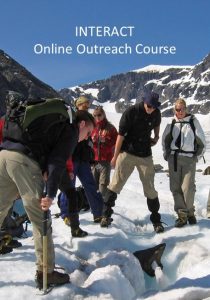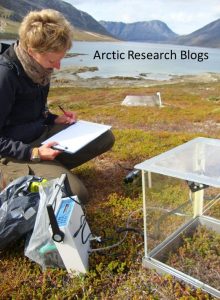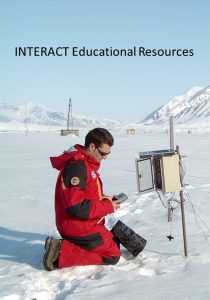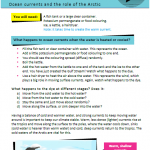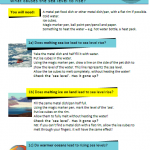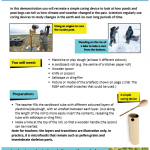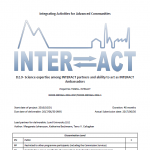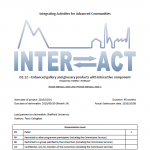Raising Arctic Awareness
INTERACT aims to inform and interact with the public, stakeholders and primary, secondary and tertiary students. In particular, we will work with people living in and around the ArcticDefinitions of the Arctic vary according to environmental, geographical, political, cultural and scientific perspectives. Some scientists define the Arctic as areas having a high latitude, long winters, short, cool summers,... More. We aim to:
- Share current knowledge and future discoveries of the INTERACT partners in order to highlight the importance of the ArcticDefinitions of the Arctic vary according to environmental, geographical, political, cultural and scientific perspectives. Some scientists define the Arctic as areas having a high latitude, long winters, short, cool summers,... More
- Alert people to environmental changes in and around the ArcticDefinitions of the Arctic vary according to environmental, geographical, political, cultural and scientific perspectives. Some scientists define the Arctic as areas having a high latitude, long winters, short, cool summers,... More
- Influence attitudes towards ArcticDefinitions of the Arctic vary according to environmental, geographical, political, cultural and scientific perspectives. Some scientists define the Arctic as areas having a high latitude, long winters, short, cool summers,... More environments and peoples’ behaviours
- Gather relevant information from stakeholders such as traditional/indigenous knowledge and through community monitoring programmes
- Work together with local people to contribute to local adaptationIn ecology, adaptation is the process by which a species acquires certain traits that improve survival in a particular environment.... More strategies to cope with the impacts of climate changeAccording to the United Nations Framework Convention on Climate Change, climate change is change in the climate of the whole Earth or a region of the Earth that is believed... More in the ArcticDefinitions of the Arctic vary according to environmental, geographical, political, cultural and scientific perspectives. Some scientists define the Arctic as areas having a high latitude, long winters, short, cool summers,... More.
Over the course of INTERACT we will develop a range of web-based material and run community-based projects. An initial survey of user needs suggested that providing resources such as photos and videos is a good place to start, so we have developed a photo gallery. We’re now building an online Arctic glossary, resources relating to citizen science and you can follow INTERACT using the range of social media sites listed on the right.
INTERACT online outreach course
“The Changing Arctic”, a Mass On-line Outreach Course (MOOC) has been developed by Terry Callaghan and Hannele Savela based on the INTERACT book “Stories of ArcticDefinitions of the Arctic vary according to environmental, geographical, political, cultural and scientific perspectives. Some scientists define the Arctic as areas having a high latitude, long winters, short, cool summers,... More Science”.
The course was commissioned and supported by Tomsk State University as a joint venture between TSU and INTERACT and it is also affiliated with the University of the ArcticDefinitions of the Arctic vary according to environmental, geographical, political, cultural and scientific perspectives. Some scientists define the Arctic as areas having a high latitude, long winters, short, cool summers,... More. The course is presented by Terry Callaghan and is available in English and Russian. It covers all aspects of climateThe average weather we would expect over a long period of time (seasons, years, decades). Climate varies from place-to-place across the Earth. Climate is determined by long-term (over at least... More and environmental change in the ArcticDefinitions of the Arctic vary according to environmental, geographical, political, cultural and scientific perspectives. Some scientists define the Arctic as areas having a high latitude, long winters, short, cool summers,... More and its local and global consequences.
Arctic research blogs
INTERACT scientists are blogging about their work. Blogs are posted by researchers that are using the opportunity to do field work on a wide variety of topics, but all related to the ArcticDefinitions of the Arctic vary according to environmental, geographical, political, cultural and scientific perspectives. Some scientists define the Arctic as areas having a high latitude, long winters, short, cool summers,... More and northern environment. Join the adventure by reading the Arctic Research Blogs!
INTERACT Educational Resources
INTERACT collaborates with Wicked Weather Watch to produce resources for teaching ArcticDefinitions of the Arctic vary according to environmental, geographical, political, cultural and scientific perspectives. Some scientists define the Arctic as areas having a high latitude, long winters, short, cool summers,... More climate changeAccording to the United Nations Framework Convention on Climate Change, climate change is change in the climate of the whole Earth or a region of the Earth that is believed... More issues in schools.
Printable pdf sheets with experiments are available below.
INTERACT develops educational toolkits for teachers. The first toolkits on permafrostPermafrost is frozen ground that remains at or below zero degrees Celsius (32 degrees Fahrenheit) for two or more years. It forms in regions where the mean annual temperature is... More and glaciers are available below (zip-file) and accompanied by animations, also available below.
-
PERMAFROST EDUCATIONAL TOOLKIT
application/zip
-
GLACIERS
application/zip
-
Demonstrating Arctic Climate Change_Ocean Currents
application/pdf
-
Demonstrating Arctic Climate Change_Rising sea levels
application/pdf
-
Demonstrating Arctic Climate Change_Pond and peat bog secrets
application/pdf
-
D2.2 1st CAWI survey report
application/pdf
-
D2.3 2nd CAWI survey report
application/pdf
-
D2.6 1st Newsletter for teachers and educators
application/pdf
-
D2.7 2nd Newsletter issues for Teachers
application/pdf
-
D2.9 Science expertise among INTERACT partners and ability to act as INTERACT Ambassadors
application/pdf
-
D2.10 Interactive Edition of the Science Stories Book
application/pdf
-
D2.12 Enhanced gallery and glossary products with interactive component
application/pdf
-
D2.13 Promotional brochure and video clip
application/pdf
-
3rd Newsletter issues for Teachers
application/pdf
